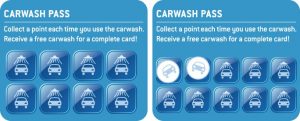
Have you ever wondered what goes on in your brain when you buy something? Why did you choose the leading brand mayonnaise over the supermarket own brand? Why did you buy the expensive shampoo? Why do you still buy your morning coffee at your regular shop in town rather than trying the coffee at the café that just opened next to your office?
A LOT has been written over the years about behavioral psychology or ‘nudge theory’ as it has become commonly known. In my opinion one of the best practical books, with ideas that you can easily apply to your own context is Decoded – The Science Behind Why We Buy by Phil Barden. Below are four ‘nudge’ concepts that you might consider applying to your work to get better results.
- The autopilot and pilot
Human brains have two decision-making ‘systems’ first identified by Daniel Kahneman in his book Thinking Fast and Slow. (see my blog on thinking fast and slow for a little more background)
- System 1 is the autopilot: it is fast, automatic, intuitive and geared for action – it is an implicit process.
- System 2 is the pilot: it is slow, rational, controlled and geared for thinking – an explicit process requiring effort.
Your autopilot allows you to act without really thinking. For example a strong brand (like Starbucks) is processed in system 1 – you know what the brand is, you don’t even have to think about it. The brand acts like a short-cut, which might explain why, if you are in a new place and want a coffee you might choose to go to Starbucks rather than try somewhere new. To be successful in influencing purchasing decisions you must be aware of how both systems work together and how to appeal to both, but with particular focus on activating the system 1 autopilot.
- Net value = reward – pain
When we buy something it involves a decision between reward (a psychological ‘value’) and pain (price): the brain offsets the two to create a ‘net value’. The higher the net value the more likely we are to purchase. Value and cost are relative and therefore can be influenced by the context that we are in.
For example in experiments, more products are sold from price lists that do not have pound signs. This is because the monetary symbol triggers pain. Remove the pound sign and you reduce the pain and increase the net value. It’s incredible that such a small change in how an item is presented could have such an impact on the decisions that people make. Is there a way that you can test this with your customers? For example, if you removed the pound sign, would it make a difference to sales results?
- Perpetual Fluency
‘Perceptual fluency’ is the autopilot ability to process something that is familiar more quickly that something that is not. This can be incredibly subtle, like in the case of an advert for a cake. A picture of the cake with the fork on the right hand side, when tested, sold more than the exact same picture with the fork on the left. This is because most people are right-handed and therefore the right-handed placement of the fork requires less effort to process. How many of these subtle nudges are you being influenced by all the time?
- Process Endowment
This is how starting someone on a process towards a goal influences purchasing decisions. In an experiment*, a car wash company issued two types of loyalty cards. An 8-stamp card and a 10-stamp card with 2 stamps pre-stamped. When a customer completed a card they received a free car wash. Both cards required 8 purchases to complete the card. Yet sales from the customers with a pre-stamped card were 79% higher than those who started with the un-stamped card. Framing the task as partially completed lead to faster completion and greater commitment. Cafes often have a system where you collect stamps for a free drink. Do you have one? Is it pre-stamped?

I suspect you already know and use a lot of these techniques. Perhaps you have never labeled it ‘behavioural psychology’ before – just common sense.
That said, in an increasingly tough environment, if we more deliberately applied the techniques above could it help us achieve better results?
Decoded – The Science Behind Why We Buy is packed with evidence-based practical examples about why people make decisions, that you could apply to your work. It is well worth a read
*Nunes JC, Dreze X. 2006. The endowed progress effect: how artificial advancement increases effort. Journal of Consumer Research. 32:504–12
A version of this blog was first published at Lucyinnovation in February 2014.
